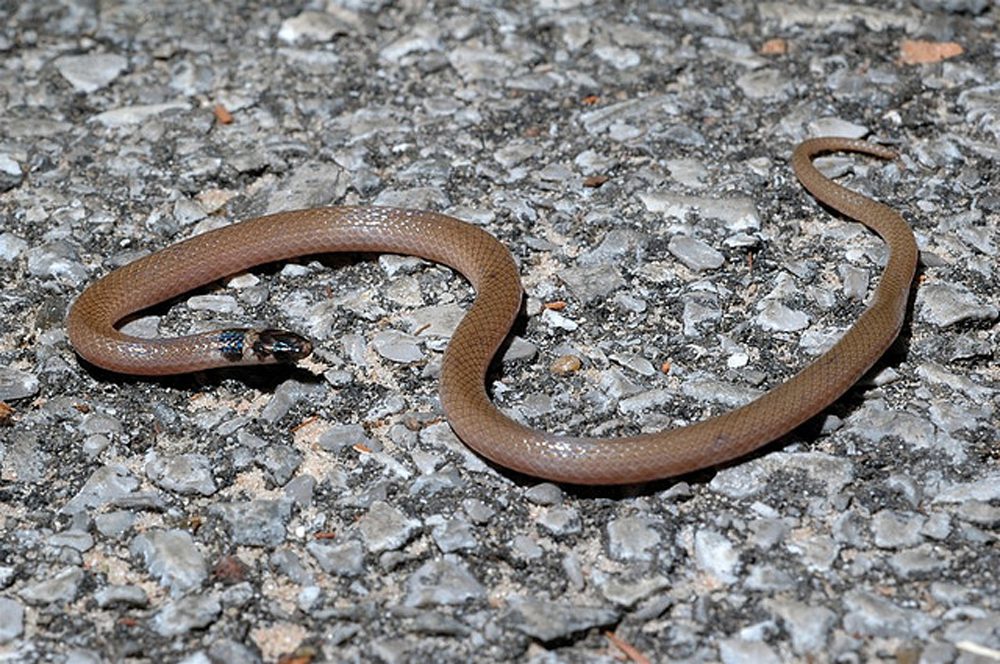The researchers say their data shows that the integration of behavioral and morphological adaptations is important to ensure the success of these snakes in subduing and consuming dangerous prey such as centipedes.
Researchers studying two centipede-eating snakes have found that while both eat the dangerous and challenging arthropods, they subdue them in different fashions before they eat them.
Rim Rock Crowned Snake Dies Trying To Eat Giant Centipede
Centipede Eats Juvenile Nose-Horned Viper From Inside Out
The snakes of the genus Tantilla are also known as centipede snakes, blackhead snakes and flathead snakes. They are of the family Coubridae and revery small, rarely exceeding 8 inches in length. They are know to eat invertebrates such as spiders, scorpions, and centipedes. The snakes observed for this study were the flat-headed snake (Tantilla gracilis) and the crowned snake (Tantilla coronata).
In their study, the researchers offered a variety of prey items to these two snake species to determined prey preferences and feeding behaviors. They also studied the cranial anatomy using geometric morphometric data that the researchers gleaned via CT scans. The researchers then recorded the encounters with the prey items on video. They found that while both the flat-headed snake and the crowned snake showed interest in the prey items offered, both species only struck and/or consumed the centipedes.
The snakes used different methods to subdue the centipedes, which are dangerous prey items for these reptiles. The crowned snakes coiled and held the centipedes to envenomate the centipede to subdue it while the flat-headed snake used what the researchers called a novel behavior of pausing and holding onto the centipedes for a lengthy period of time prior to swallowing the arthropods.
The researchers noted that the skull element of the snakes differed in shape after removing the effects of size, position and orientation. They also determined the rear fang was larger in crowned snakes, but the lower jaw of the flat-headed snakes held a mechanical advantage when subduing the prey.
The researchers say their data shows that the integration of behavioral and morphological adaptations is important to ensure the success of these snakes in subduing and consuming dangerous prey such as centipedes.
The researchers are Noah D Gripshover and Christian L. Cox, Department of Biological Sciences, Florida International University, Miami, FL; Patrick Hennessey School of Biological and Behavioral Sciences, Queen Mary University of London, London; Lance D McBrayer
Department of Biology, Georgia Southern University; Jesse M Meik, Department of Biological Sciences, Tarleton State University, Stephenville, TX, 76402USA; and Charles M Watson, Department of Life Sciences, Texas A&M-San Antonio
An abstract of the paper, When food fights back: skull morphology and feeding behavior of centipede-eating snakes” can be read on the Integrative & Comparative Biology website.


